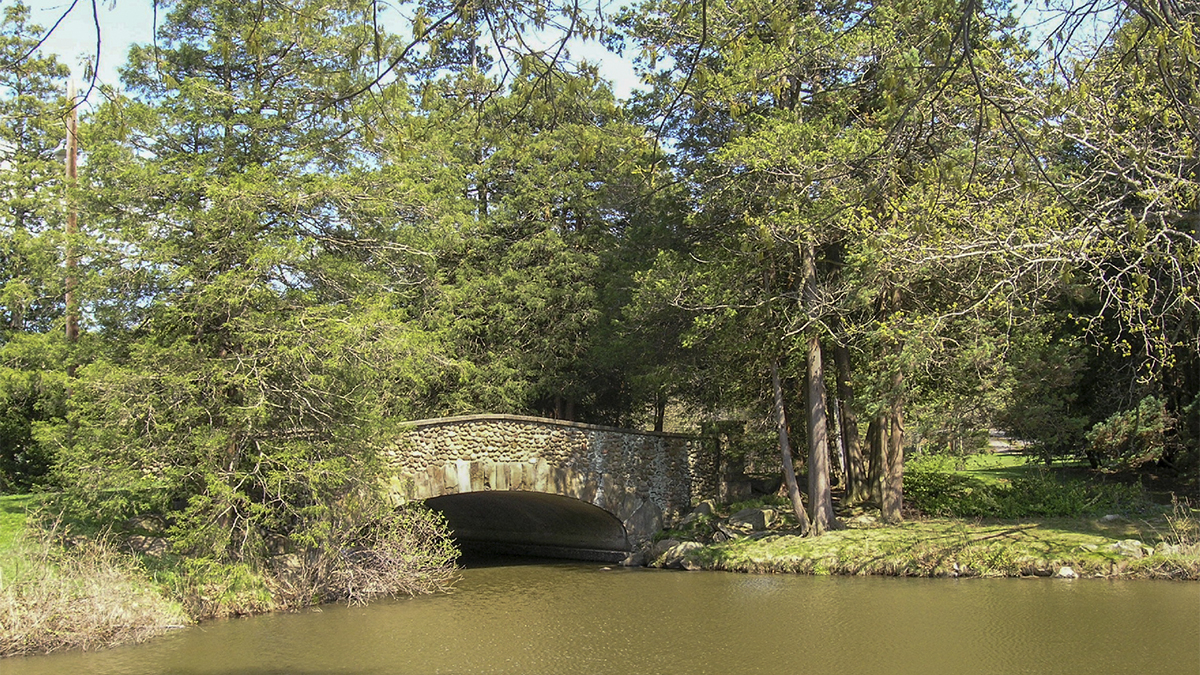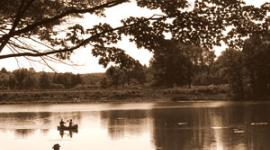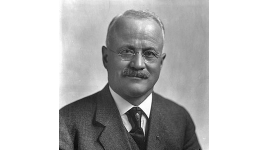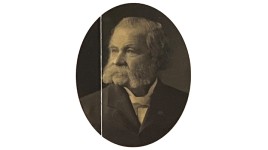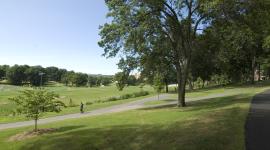Landscape Information
Straddling the boundary of West Hartford and West End, this 101-acre park incorporates a nineteenth century gentleman’s farm established by businessman Charles Pond. In 1869 Pond bequeathed the property to his son Charles M. Pond who established a mansion and engaged local landscape gardener Thomas McClunie to improve the grounds.
In 1870 landscape architect Frederick Law Olmsted, Sr., recommended transforming the estate into a park and establishing a ring of parks around the city. In 1894 Pond bequeathed the parcel to the city for the creation of a park to be named for his wife.
In 1897 a naturalistic pond was established near its center and in 1900 the city’s Superintendent of Parks, Theodore Wirth, developed a general plan. Wirth laid out a network of curvilinear drives, meadows, irregular groupings of trees, and a formal rose garden (1904). Noted as the first municipal rose garden in the nation, it originally included 116 beds planted with some 190 varieties. In 1905 a stone bridge was constructed along the pond and in 1906 athletic fields, playgrounds and other recreational amenities were introduced.
During the Great Depression, city officials used Work Progress Administration funds to expand the Rose Garden and add other amenities. Structures were established throughout the park including a low brownstone building (now the Garmany Visitor Center) and the Pond House (1959).
In 1977 the non-profit organization, Friends of Elizabeth Park (now the Elizabeth Park Conservancy) was established to rehabilitate the rose garden. The group has since partnered with the city to manage the gardens and grounds. In 2017 the conservancy engaged landscape architects Anne Penniman and Associates to prepare a master plan.
Elizabeth Park was listed in the National Register of Historic Places in 1983.




